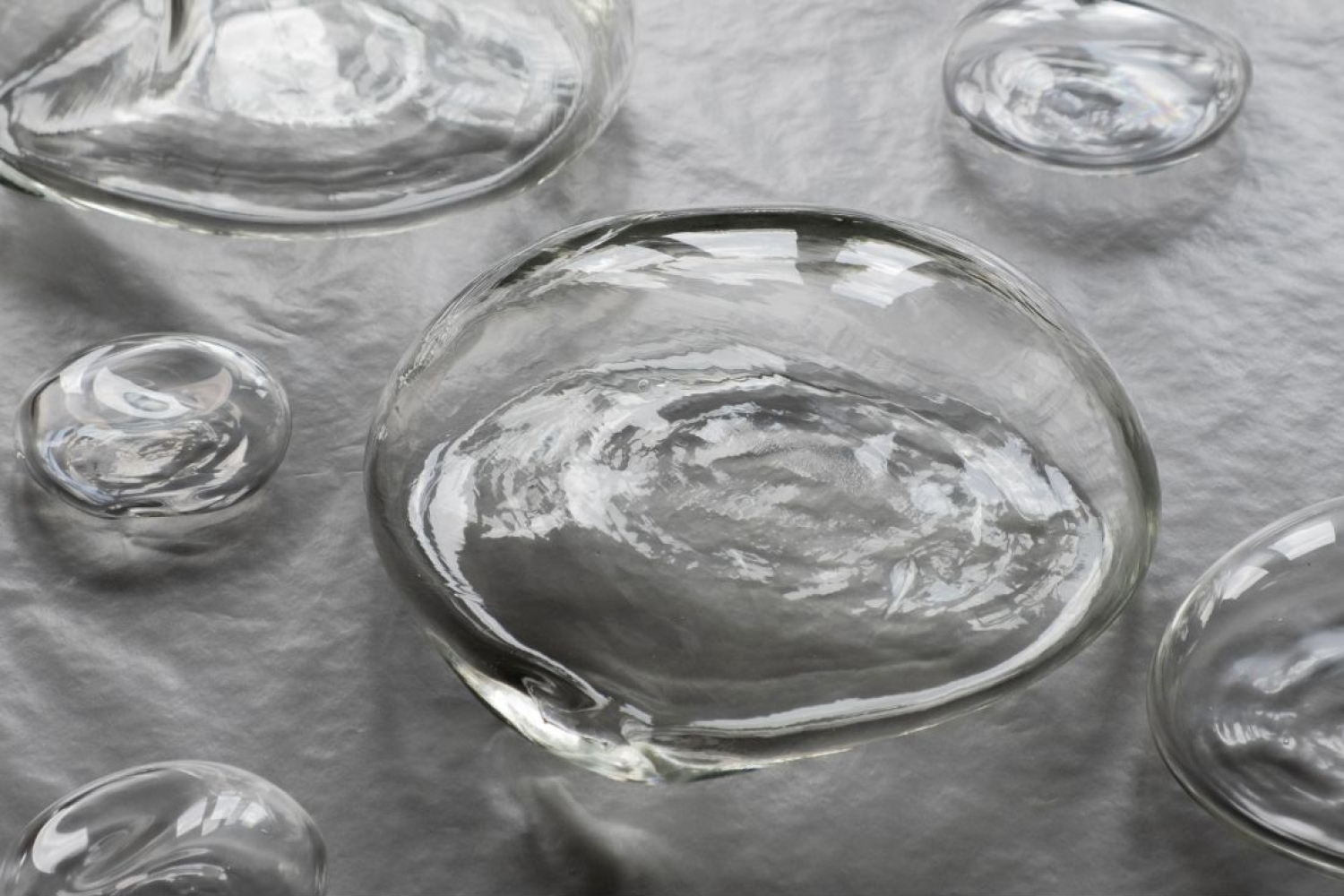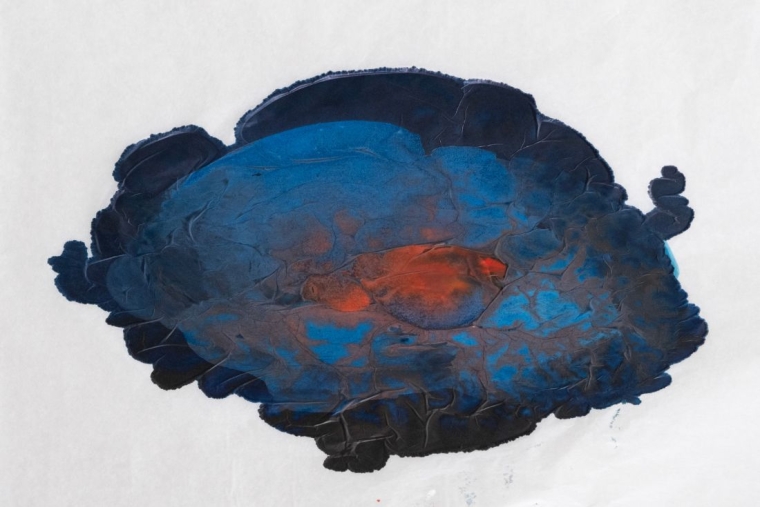
Pools

Pools
Fragility and Resilience, presented by the Ishara Art Foundation, marks Ayesha Sultana’s first comprehensive solo exhibition in the GCC. The show is an exploration of the delicate balance between the vulnerability and strength of our planet in the 21st century. Challenging the conventional binaries that separate concepts of the fragile and the resilient, Sultana proposes that fragility can be a form of strength while encompassing profound vulnerability. This thematic exploration is particularly pertinent in the contemporary world as social, ecological and personal upheavals continually test the limits of sustainability.
Featuring a diverse array of artworks that includes the first-ever unveiling of Sultana’s hand-blown glass sculptures, the exhibition presents newly made oil paintings, watercolour on Japanese silk tissue, works on clay-coated paper, and her past photographic explorations. It also offers a rare glimpse into Sultana’s creative process through the inclusion of her sketchbooks, diaries, in-progress artworks and an unfinished video.
Fragility and Resilience is designed to guide viewers through a journey of discovery and reflection. The exhibition is divided into three sections, each gently transitioning into the other. Visitors can fully engage with the unique qualities and thematic nuances of each body of work while experiencing the show as a cohesive whole.
Upon entering Ishara, visitors encounter Sultana’s hand-blown glass sculptures on a raised platform. Epitomising the duality of the exhibition’s title, each work in the series bears a deep connection with the human body, as it requires the glassblower’s breath to give it its final form. The process of creating these sculptures embodies the tension between brittleness and strength, as glass in its molten state is malleable and hardens upon cooling. With their organic forms, the sculptures resemble droplets of water, transparent organs, or bubbles of air that may burst upon the slightest touch.
Surrounding her sculptures are works from Sultana’s ‘Breath Count’ series that was commenced in 2018. Marks of varying shapes, sizes and depths are scratched onto clay-coated paper, keeping time with Sultana’s breaths during different moments in her life. This intimate diary of her personal experiences, recorded through the unconscious act of inhaling and exhaling, serves as a performative score capturing the strained experience shared by humanity since the onset of the pandemic, where every breath was both precious for sustaining life and a threat to others. Clay is a material associated with the earth, and paper with trees, evoking a unique interplay between these elements.

Inhabiting Our Bodies
Interwoven with ‘Breath Count’ are works from Sultana’s ‘Threshold’ series, created to commemorate her father’s passing in 2008. The series consists of photographs taken by him in the 1980s and 1990s during his assignments as an officer of the Bangladesh Air Force in South Asia, the GCC and the US, along with photographs that Sultana took during her own travels in later years. Holding onto the image in the face of erasure becomes a central theme in these works, where serene views of cities and landscapes are solarized and scratched. Scratches disrupt the viewer’s perception of the photographic image, symbolising the imprint of time on landscapes, bodies and architecture.
Tissue in Sultana’s ‘Miasms’ and ‘Inhabiting Our Bodies’ series (presented in the next section of the exhibition) is a poignant choice of medium, epitomising frailness, ephemerality and fluidity. Tissue paper, with its delicate and translucent nature, is easily torn, damaged, dissolved and dispersed. However, Sultana transforms this tenuous medium into a vehicle for artistic expression evoking both skin and the turbulence of the sea. In the tradition of feminist art practices, these abstract works are reminders of stains, pools of fluid, blood clots and microscopic nuclei—all life-affirming. The resulting works possess a quiet strength, speaking to an aesthetics of the body and the ecosystem that prevails despite devastation.
A unique feature of this exhibition is the inclusion of Sultana’s sketchbooks, diaries, in-progress artworks and an unfinished video. Arranged on tables across Ishara’s mezzanine, these documents and artefacts offer a rare and intimate glimpse into her artistic process. They reveal the meticulous planning, experimentation and emotional investment underlying each finished piece, highlighting the fragility and resilience inherent in all creative acts. This material serves as a testament to the artist’s willingness to embrace the unknown and the incomplete. The exhibition reflects the fluidity and openness that characterise Sultana’s approach to art, allowing viewers to witness the raw, unpolished stages of her creative journey. To enhance the visitor experience and deepen the engagement with this exhibition’s themes, Ishara Art Foundation will host a series of public programmes that include artist talks, guided tours and interactive workshops.
About the Artist
Ayesha Sultana (b. 1984) was born in Jashore, Bangladesh, and lives and works in Lilburn, Georgia, USA. Her practice spans drawing, painting and sculpture, exploring the material and conceptual possibilities of form and medium. Sultana completed her Bachelors in Fine Art in 2007, and a post-graduate diploma in Art Education in 2008 from Beaconhouse National University, Lahore, where she also taught for two years. She is a member of the artist-run organisation, Britto Arts Trust in Dhaka.
Sultana has exhibited worldwide in solo and group exhibitions, including the Dhaka Art Summit (2014 and 2023); ‘Artist’s Rooms’, Jameel Arts Centre, Dubai (2022); ‘Shifting the Silence’, San Francisco Museum of Modern Art (SFMOMA) (2022); ‘Making Visible’, Experimenter, Mumbai (2022, 2017); ‘Bare Bones’, Experimenter, Kolkata (2021); ‘Line, Beats and Shadows’, Kiran Nadar Museum of Art, New Delhi (2020); Art Basel (2019); the 9th Asia Pacific Triennial of Contemporary Art (APT9), Queensland (2018); the Lahore Biennale 01, Lahore (2018); and the 11th Gwangju Biennale, Gwangju (2016). Her work has also appeared in group exhibitions at On Site, New Delhi; Queens Museum, New York; Jhaveri Contemporary, Mumbai; Leila Heller Gallery, New York; and Athr Gallery, Jeddah.
Sultana’s works have been widely collected by institutions that include SFMOMA, San Francisco; Kiran Nadar Museum of Art, New Delhi; Devi Art Foundation, New Delhi; X Museum, Beijing; Samdani Art Foundation, Dhaka; Tate Modern, London; and the Ishara Art Foundation and Prabhakar Collection, Dubai, amongst others.
Words Platform Desk
Date 09.09.2024